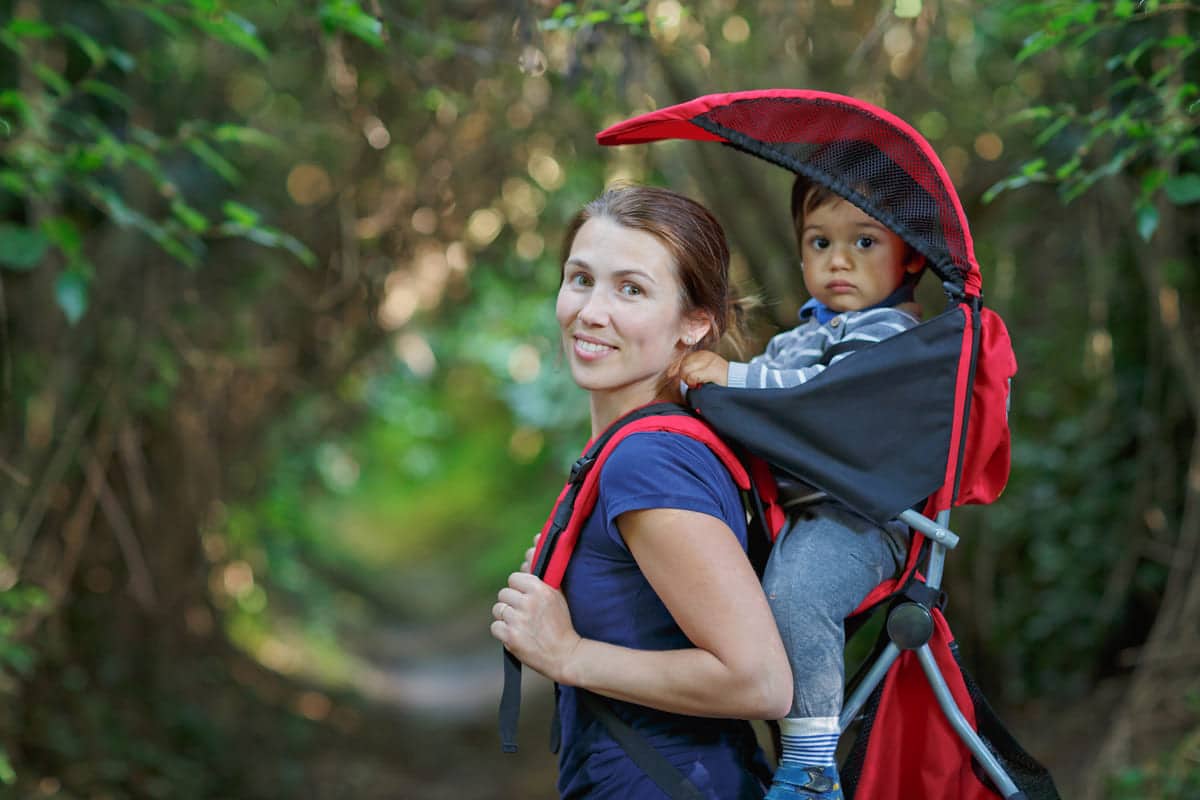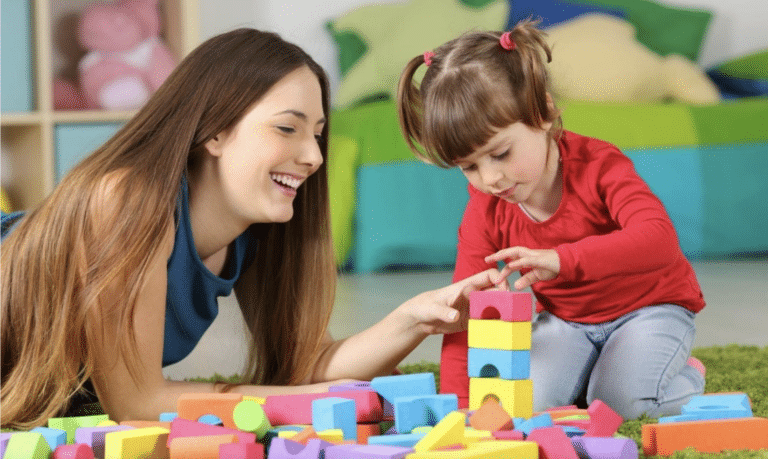Parents always want to keep their babies close to them, and using a baby carrier is a great way to do so. Not only does it provide convenience for parents, but it also promotes bonding between the parent and child. But for those who may have never used a baby carrier before, it can be quite daunting to figure out how to properly use one. In this guide, we will cover the basics of using a baby carrier and provide some tips to ensure safe and comfortable use for both the parent and baby.
Key Takeaways:
- Baby carriers are a convenient way to keep your baby close while also promoting bonding between parent and child.
- Proper use of a baby carrier is important for the safety and comfort of both parent and baby.
- It’s important to choose a carrier that fits your body and provides adequate support for your baby.
In This Article
What is the baby carrier?
The baby carrier is a type of baby gear that allows you to carry your child hands-free. It is usually made of fabric and has straps that can be adjusted to fit the parent’s body comfortably. Baby carriers provide a secure and comfortable way to carry your baby, whether you are running errands or going for a walk. Carriers can be used from birth up to the toddler stage, making them a great investment for parents.
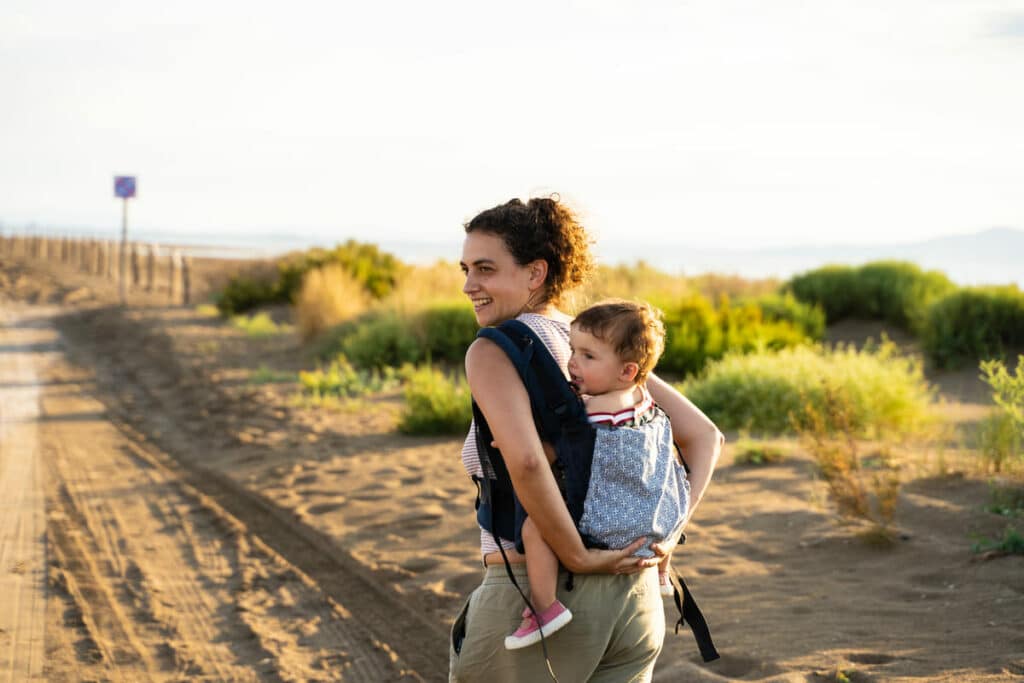
What are the different types of baby carriers?
There are several types of baby carriers available on the market, each offering different styles and features. Some popular options include:
- Wraps: Made of stretchy fabric that is tied around the parent’s body in various ways to create a secure pouch for the baby.
- Slings: Made of a long piece of fabric that is worn over one shoulder and across the torso, creating a hammock-like seat for the baby.
- Soft Structured Carriers (SSC): These are structured carriers with padded straps and adjustable buckles for comfortable wear.
- Meh Dais: Similar to SSCs, Meh Dais are also structured carriers but with tie straps instead of buckles.
- Hip Seats: These are worn around the waist and have a padded seat for the baby to sit on, providing support for the parent’s back.
- Frame Backpacks: Designed for outdoor activities, these carriers have a metal frame and adjustable straps to distribute weight evenly.
How to use Baby Carrier: Step-By-Step Instructions?
Baby carriers are essential items for any new parent, but using them safely is crucial. Here are some steps for using a baby carrier:
Step 1: Read the instructions
Before using a baby carrier, make sure to read the user manual and understand how to wear it properly. Baby carriers come in different styles, and each requires a specific way to wear them.
Step 2: Adjust the carrier
Make sure the carrier is adjusted according to your body size and your baby’s weight. The straps should be snug but not too tight, and the baby’s seat should be at or above hip level for proper support.
Step 3: Position Your Baby
Place your baby in the carrier, making sure that their airway is clear and they are facing towards you. Their legs should be in a spread squat position to support their hips.
Step 4: Secure Your Baby in the Carrier
Once your baby is in the carrier, make sure to secure them properly. This includes fastening any buckles or straps and adjusting them as needed for proper fit. However, avoid making the carrier too tight, as it may restrict your baby’s movements and breathing.
Step 5: Test the Carrier’s Stability
Before going for a walk or any other activity, it’s essential to test the carrier’s stability. Gently lean forward and backward to check if your baby stays in place. If they seem unstable, readjust the carrier until your baby feels secure.
Step 6: Monitor Your Baby
While using a baby carrier, always keep an eye on your baby to ensure their comfort and safety. If they show any signs of discomfort or overheating, take them out of the carrier immediately.
Step 7: Enjoy Babywearing
Now that your baby is safely secured in the carrier, you can enjoy all the benefits of babywearing. It allows you to have hands-free time while keeping your little one close and providing them with a sense of security and comfort.
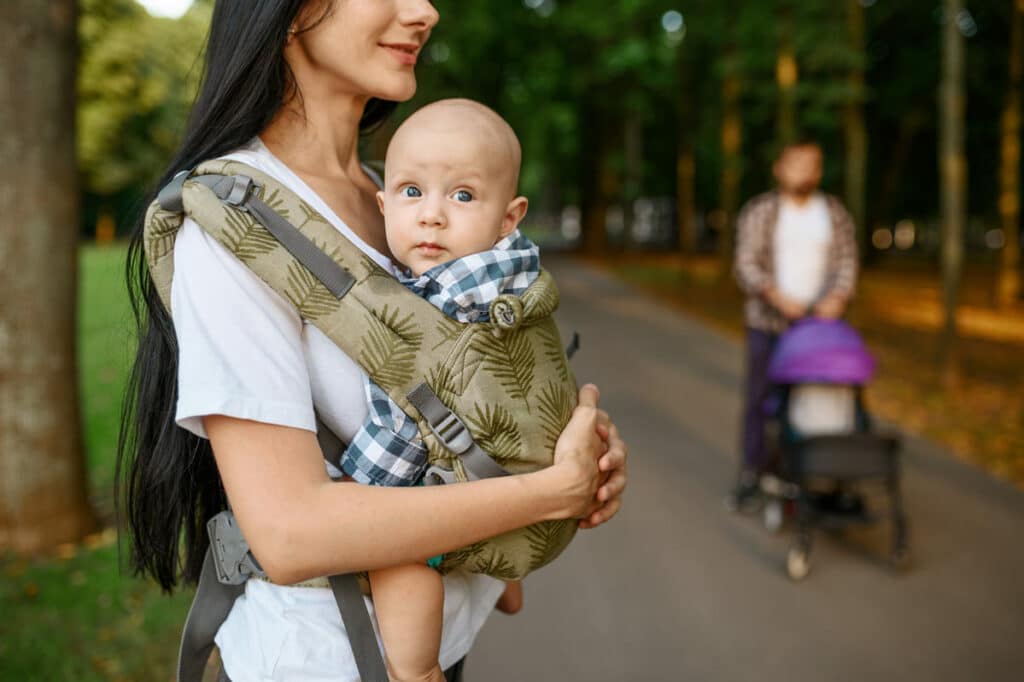
Additional tips for using a baby carrier with twins:
- Look for carriers designed specifically for twins or ones that allow you to carry two babies at once.
- Make sure the carrier is adjustable to accommodate the size and weight of both babies.
- It’s best to start using a twin carrier when your babies have good head control and can hold their heads up on their own.
- Always monitor both babies while wearing them in a carrier, and make sure they are in a safe and comfortable position.
- Don’t hesitate to ask for help when putting on or taking off the carrier, especially with two babies.
Safety Tips To Consider When Using a Baby Carrier
When using a baby carrier, it’s essential to follow safety guidelines to ensure the well-being of both parent and child. Here are some general safety tips to keep in mind:
- Always read the instructions and follow them carefully.
- Choose a carrier that is suitable for your baby’s age, weight, and developmental stage.
- Check for any signs of wear or damage before each use. If the carrier is damaged, do not use it.
- Make sure your baby’s airway is clear at all times and that they are in a comfortable position.
- Avoid wearing a carrier while cooking, using hot objects, or engaging in any activities where there is a risk of falling or injury.
- Take breaks and give yourself and your baby time to rest from being in the carrier.
- Avoid covering your baby’s head or face with any fabric while in the carrier, as it may affect their breathing.
- If you feel uncomfortable or experience back pain while wearing a carrier, take it off and try adjusting it to better fit your body.
- Lastly, always trust your instincts and listen to your baby’s cues. If you feel like something is wrong, take them out of the carrier immediately.
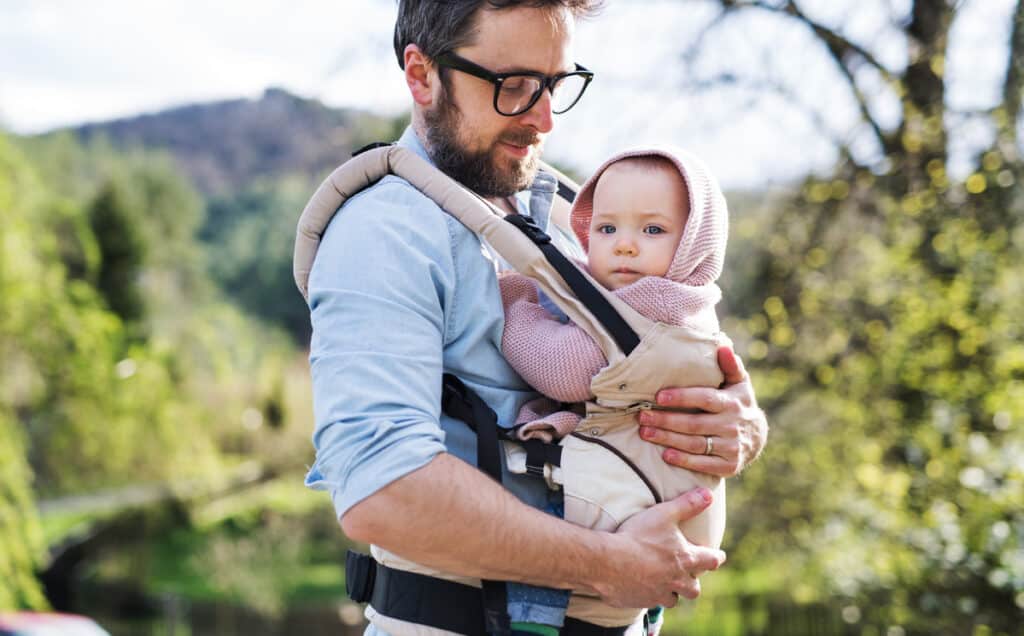
What are the Benefits of Using Babywearing?
Using a baby carrier offers numerous benefits for both the parent and the baby. Some of the advantages include:
- Convenience: Baby carriers allow you to keep your hands free while carrying your baby, making it easier to do tasks like shopping, cooking, or going for a walk.
- Bonding: The physical closeness of babywearing promotes bonding between parent and child, which can have long-term effects on the child’s emotional well-being.
- Promotes breastfeeding: Baby carriers make it easier for mothers to breastfeed on the go, as they provide privacy and support for the baby.
- Reduces crying: Research has shown that babies who are carried in a carrier cry less, as they feel secure and comforted by the physical contact with their parent.
- Stimulates development: The motion and closeness of babywearing can stimulate brain development in babies, as well as aid in the development of their motor skills.
- Postpartum benefits: For the mother, wearing a baby carrier can help with postpartum recovery by promoting good posture and strengthening core muscles.
- Travel-friendly: Baby carriers are compact and easy to bring on trips, making it convenient for parents to carry their baby while exploring new places.
- Versatility: With different types of carriers available, parents can choose one that best suits their needs and preferences, whether it’s for quick errands or long hikes.
What Common Mistakes You Should Avoid While Using Babywearing?
Parents should be aware of some common mistakes when it comes to babywearing. These include:
- Incorrect positioning: It’s essential to ensure that the baby is positioned correctly in the carrier, with their head and neck supported at all times.
- Using incorrect carriers for age/weight: It’s important to choose a carrier that is appropriate for your baby’s age and weight, as this can affect their comfort and safety.
- Not considering the weather: Parents should consider the weather when choosing a carrier – for example, using a thick carrier in hot weather can cause discomfort for both parent and baby.
- Not adjusting the carrier properly: A poorly adjusted carrier can lead to discomfort or even injury for both the parent and baby. It’s crucial to follow the manufacturer’s instructions for proper adjustments.
- Not checking for wear and tear: It’s essential to regularly check your carrier for any wear and tear, such as loose stitching or broken buckles, to ensure safety.
- Not listening to your baby: Every baby is different, and their preferences for babywearing may vary. It’s important to listen to your baby’s cues and adjust accordingly.
- Wearing baby facing outward for extended periods: While some carriers allow babies to be worn facing outward, it’s not recommended to do so for extended periods, as it can overstimulate the baby and cause discomfort.
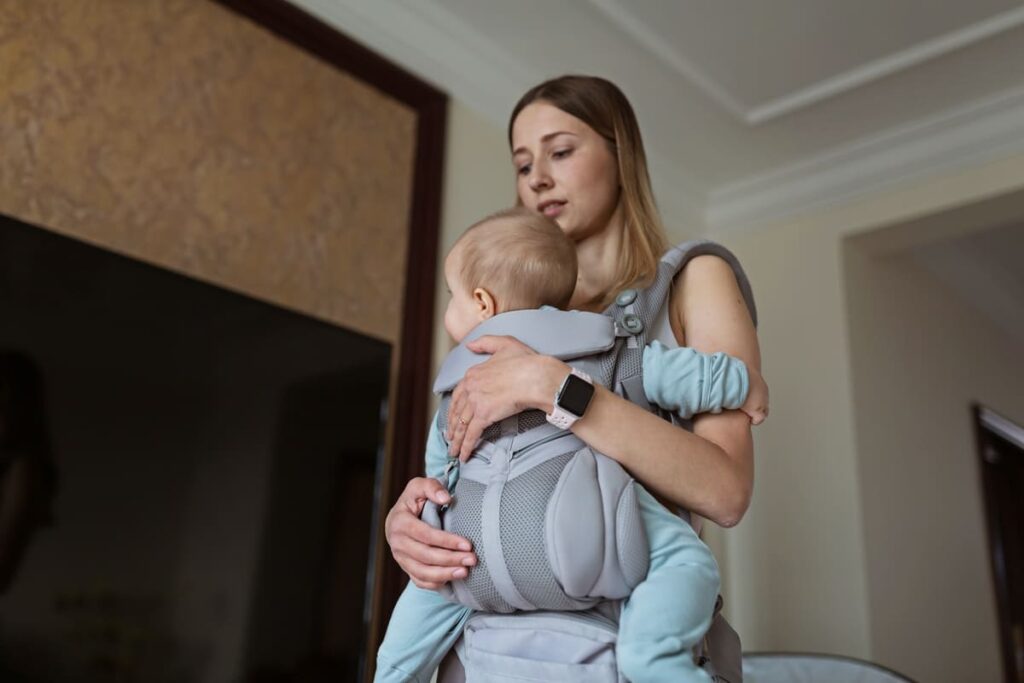
What Does the Expert Recommend On Using Baby Carriers?
Choosing the right baby carrier is crucial for both comfort and safety. Experts recommend prioritizing ergonomic designs that support a baby’s natural hip development and evenly distribute weight for the wearer.
According to experts, “Ergonomics is key – select carriers that support the baby’s natural hip positioning, preventing potential hip dysplasia.” Baby carriers that allow a baby’s legs to spread naturally, also known as the “M” position, are recommended for healthy hip development.
Furthermore, many experts believe that around 6 months of age, babies are able to hold their heads up and have good neck control, making it a suitable time to start using a carrier. They also highlight the need for breathable fabrics, saying, “Opt for materials that keep both parent and baby cool, reducing the risk of overheating.”
In addition to considering the design and materials of a carrier, experts also emphasize proper usage. It is important to follow instructions for safe positioning and always keep an eye on the baby’s breathing.
Conclusion
In summary, baby carriers are an excellent option for parents who want a convenient and comfortable way to carry their babies. With various types of carriers available, it’s essential to choose one that fits your body and provides proper support for your little one. By following the instructions and practicing safe usage, you can enjoy all the benefits of babywearing while keeping your child close and secure. So, go ahead and start babywearing today!

